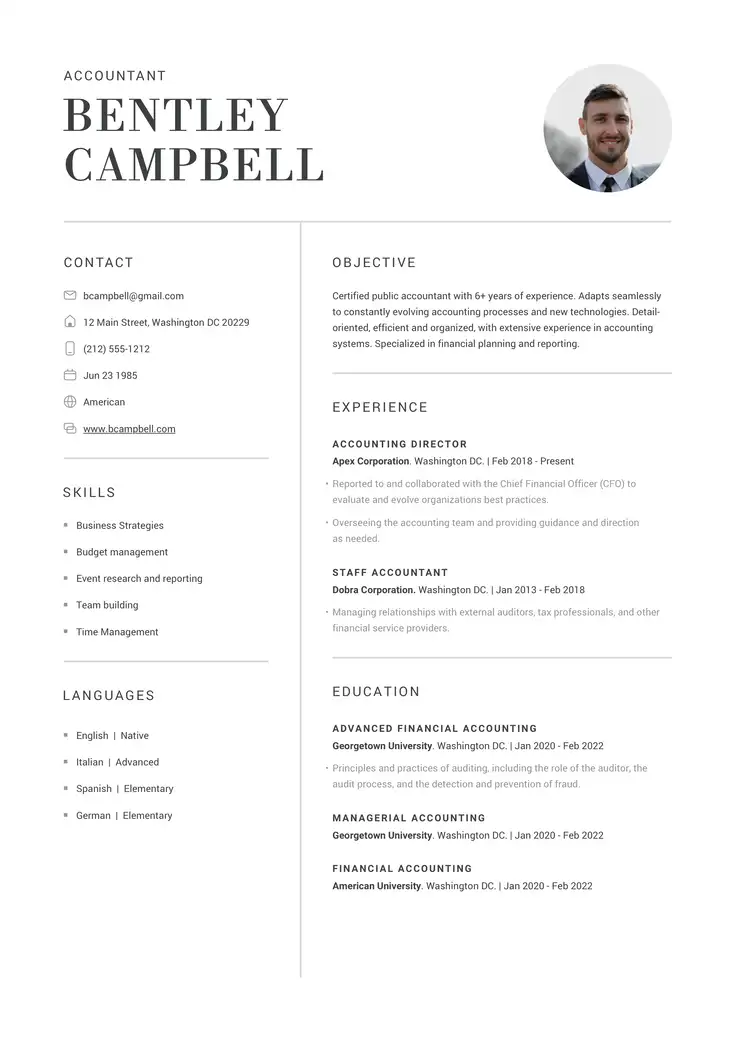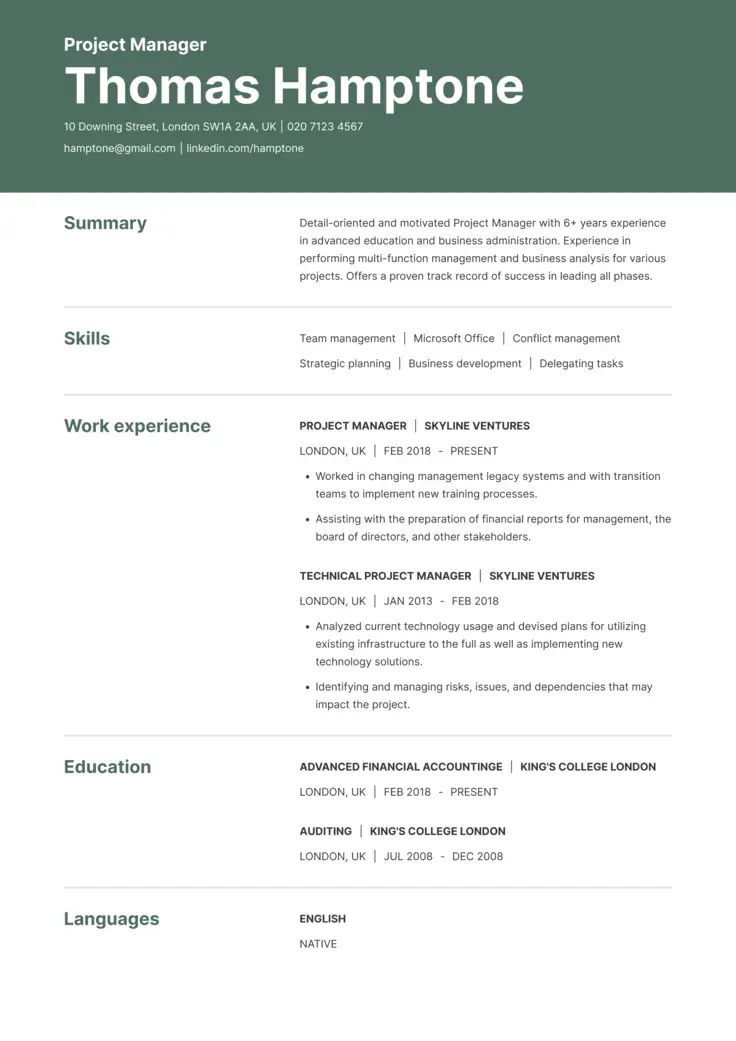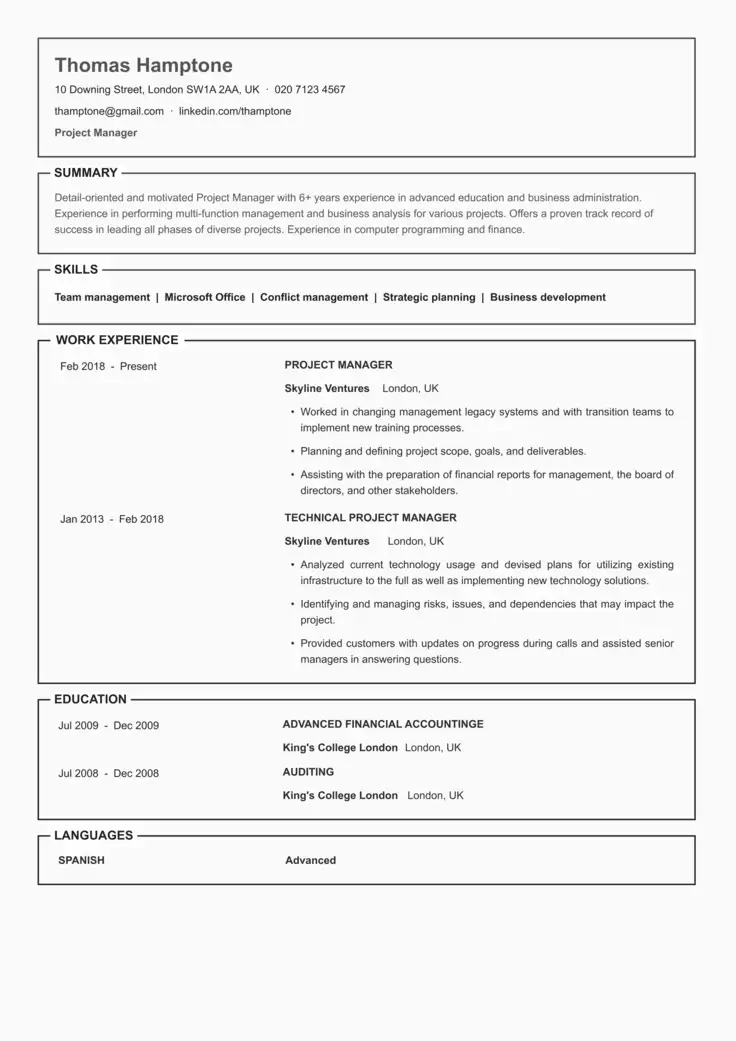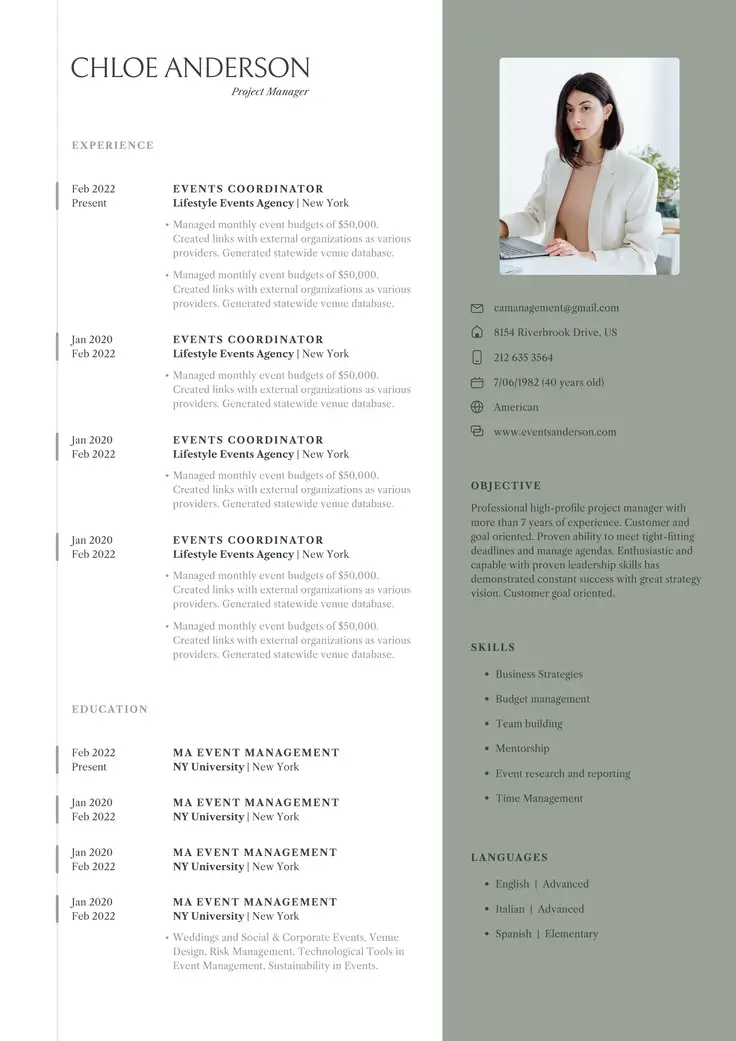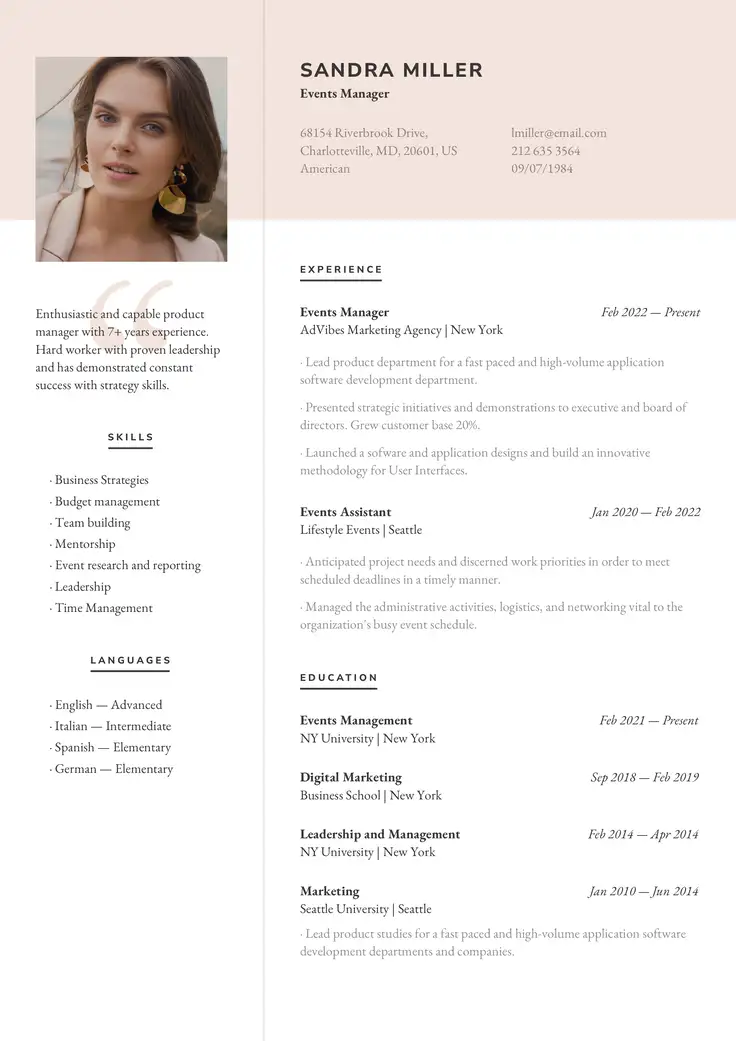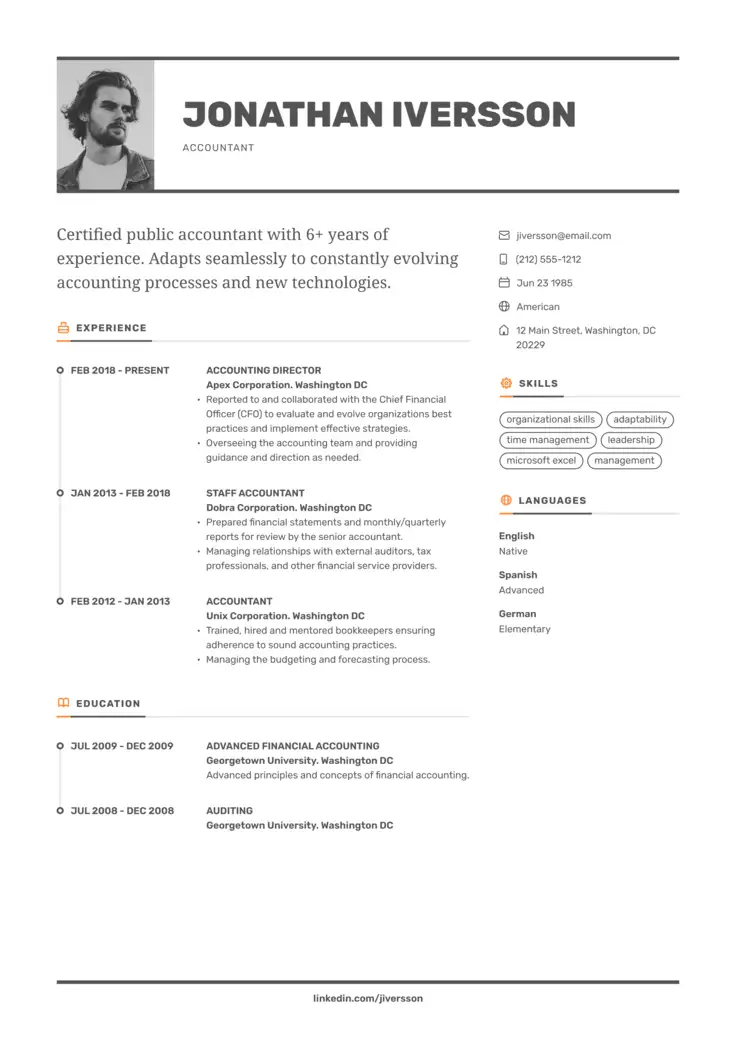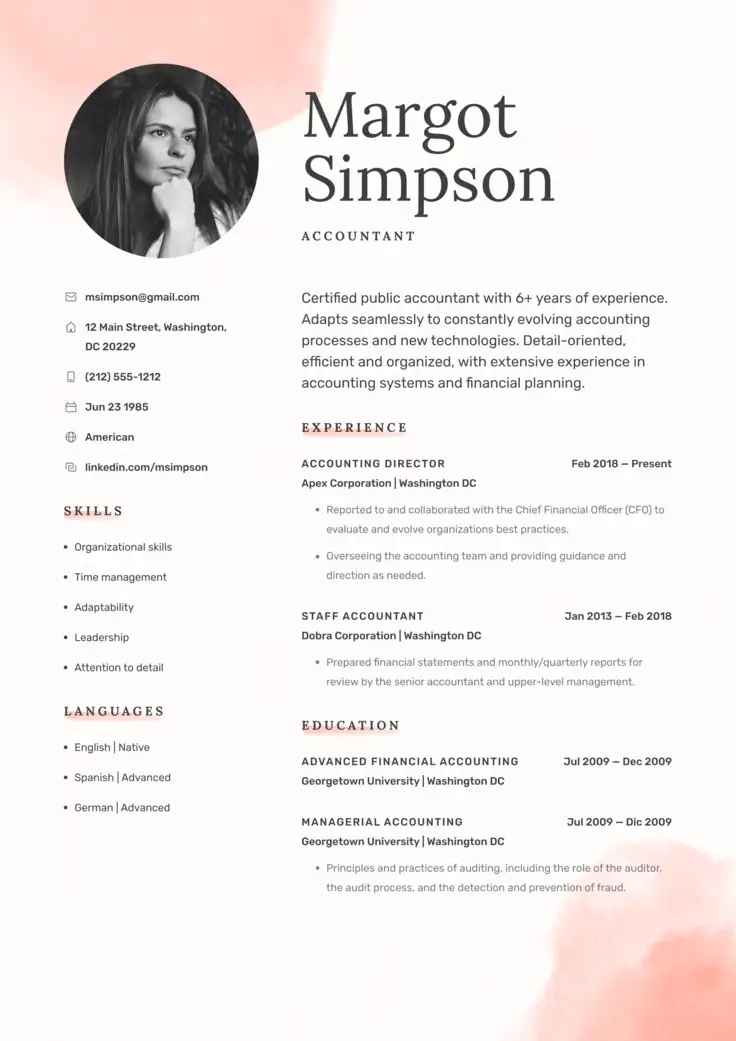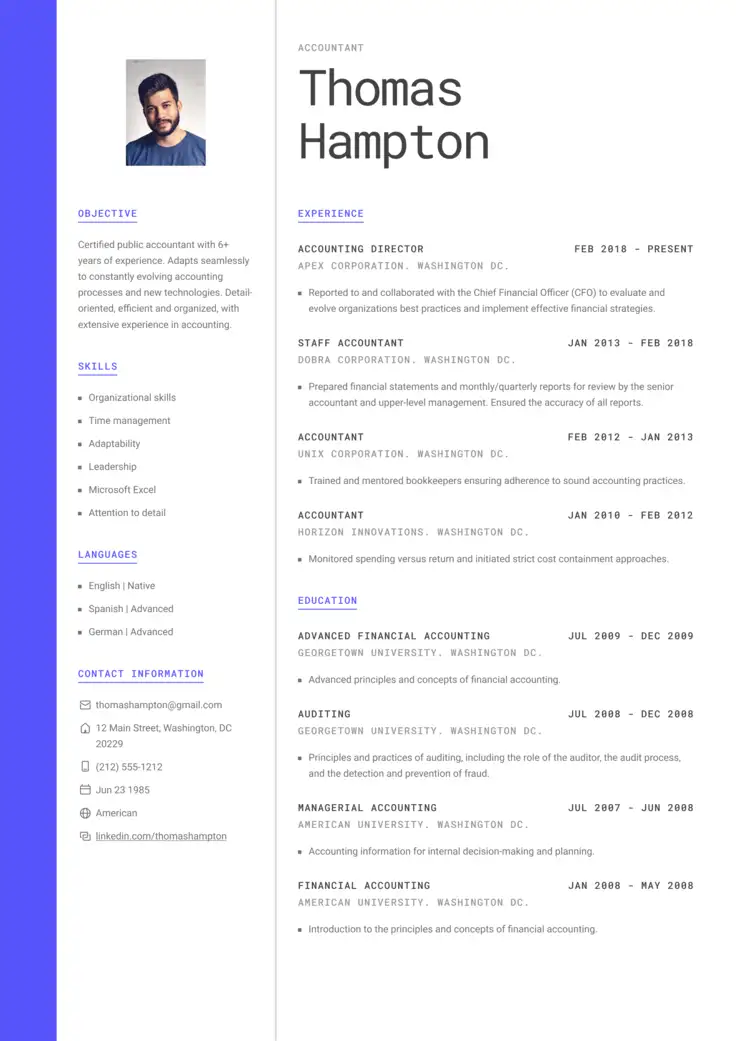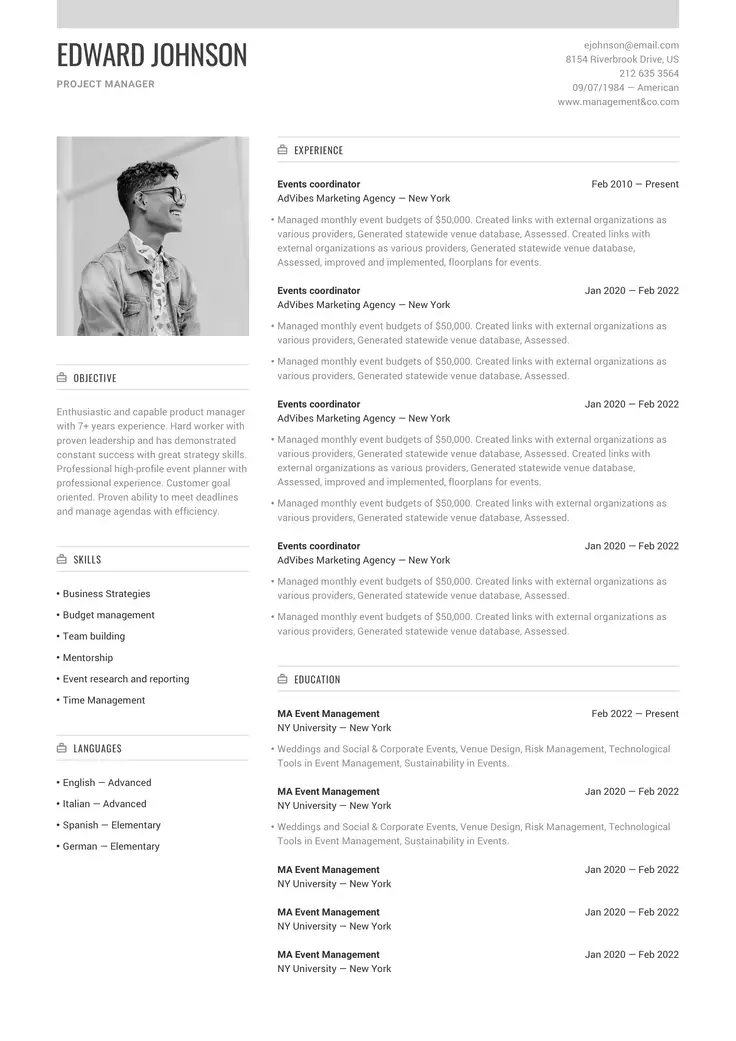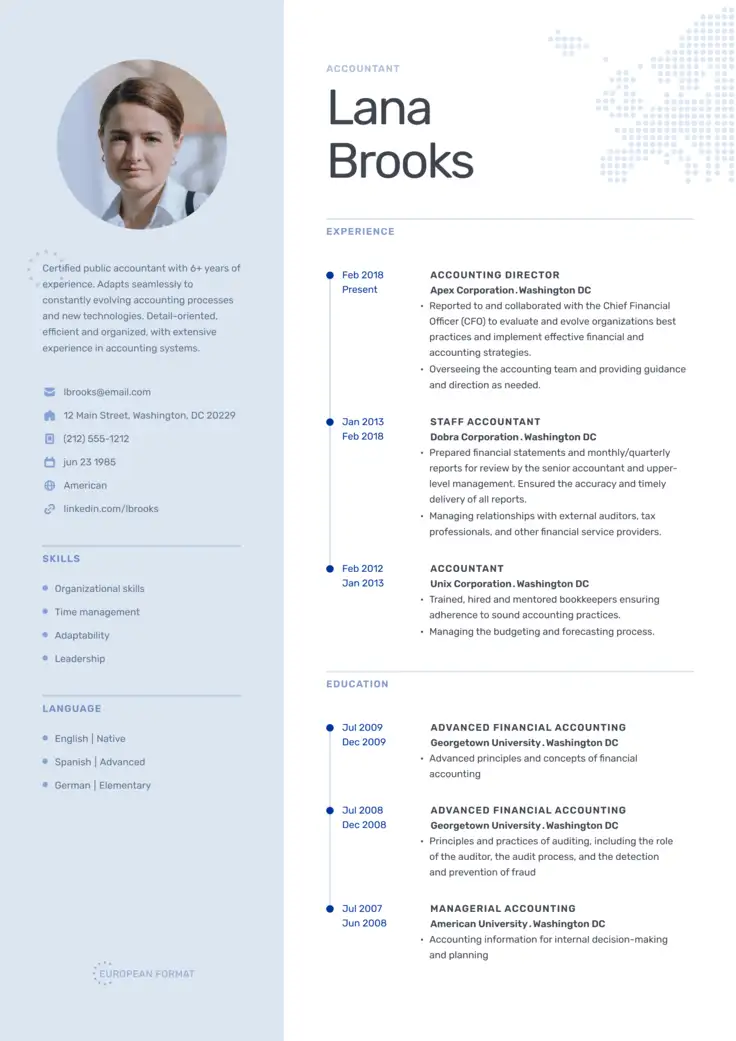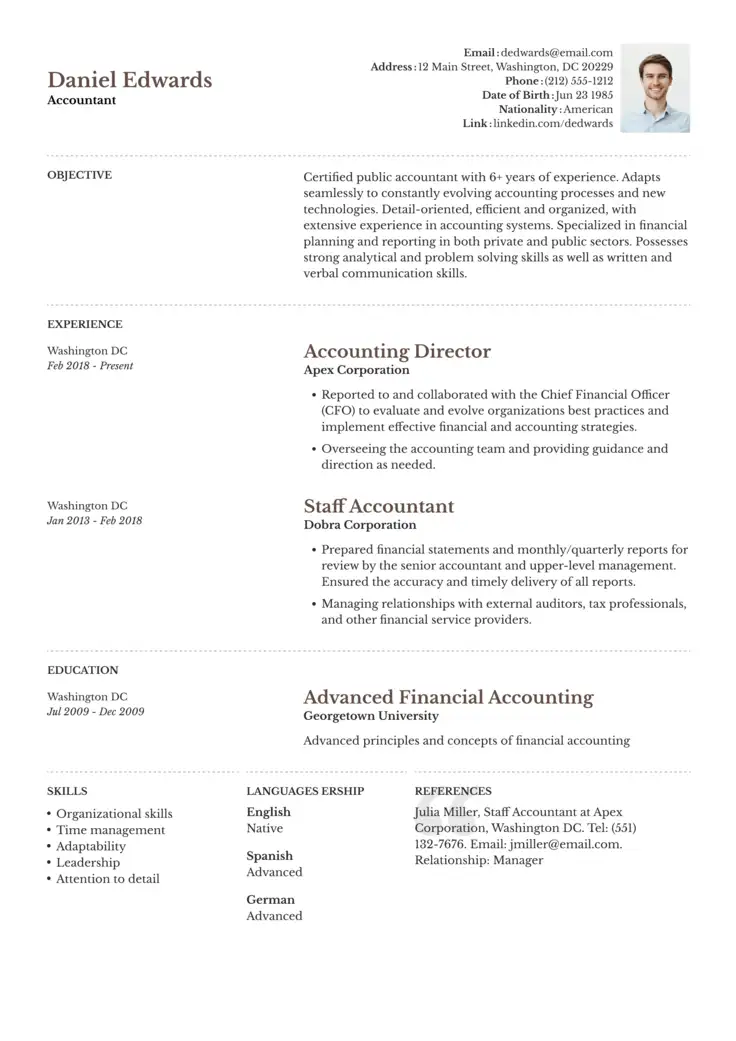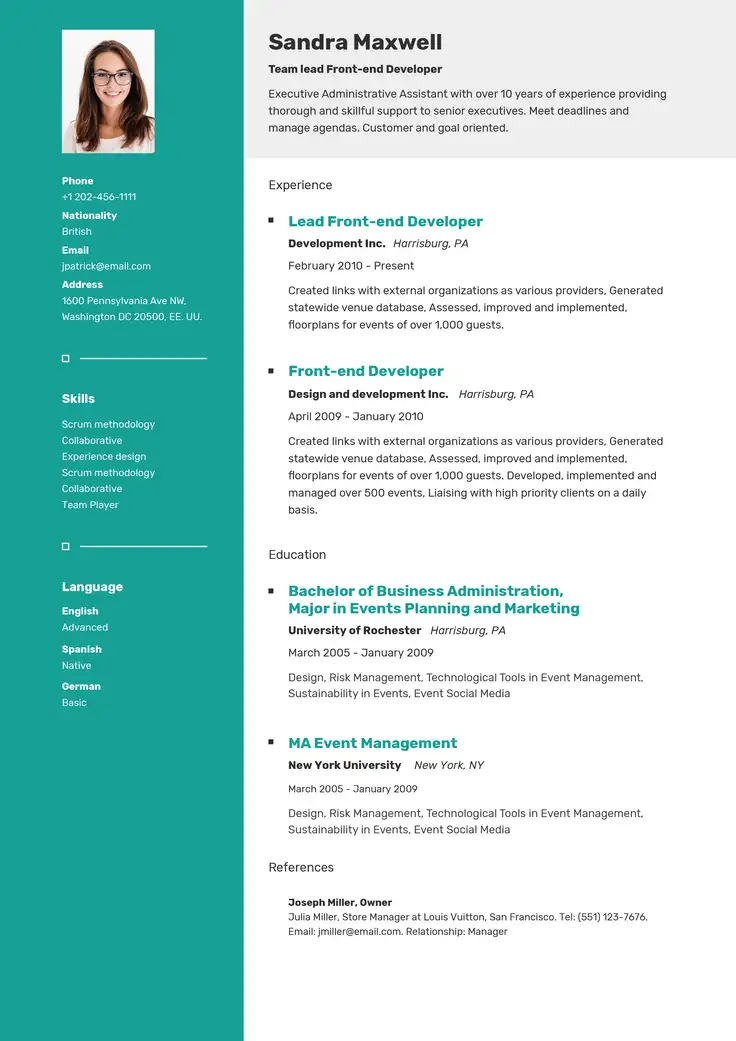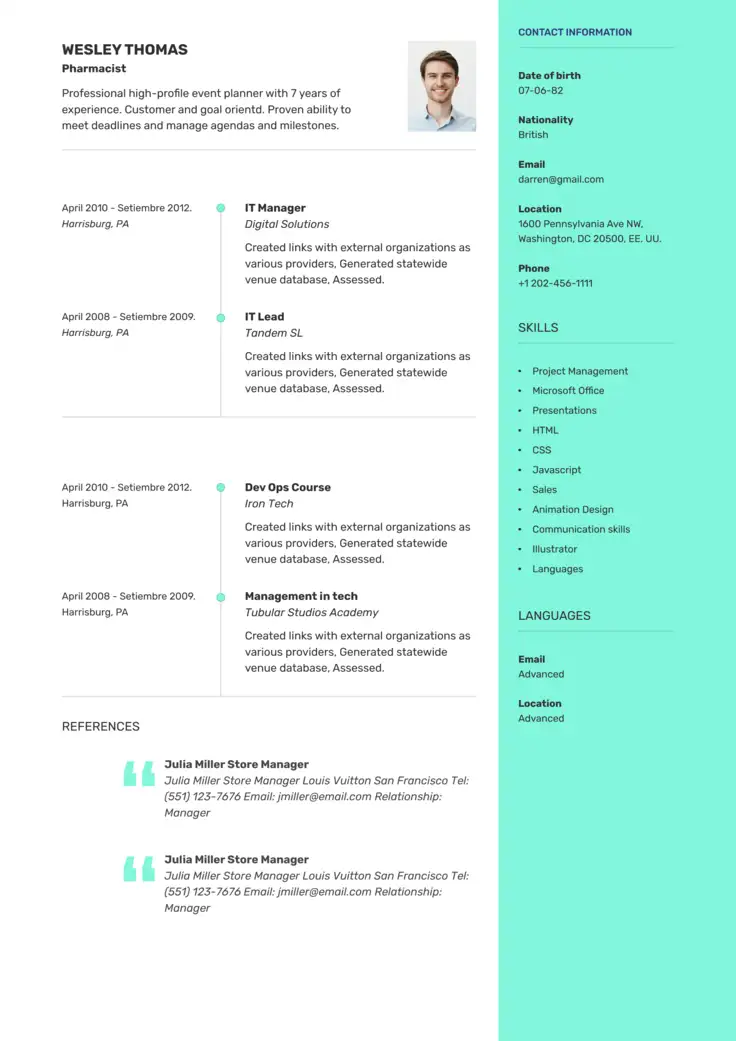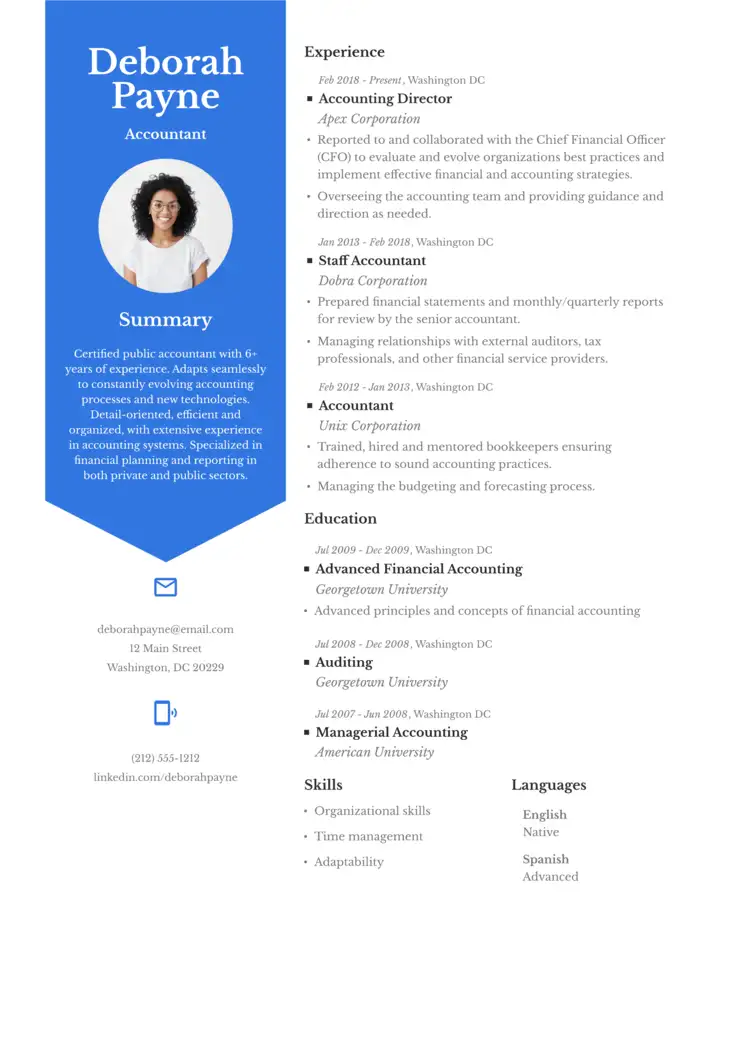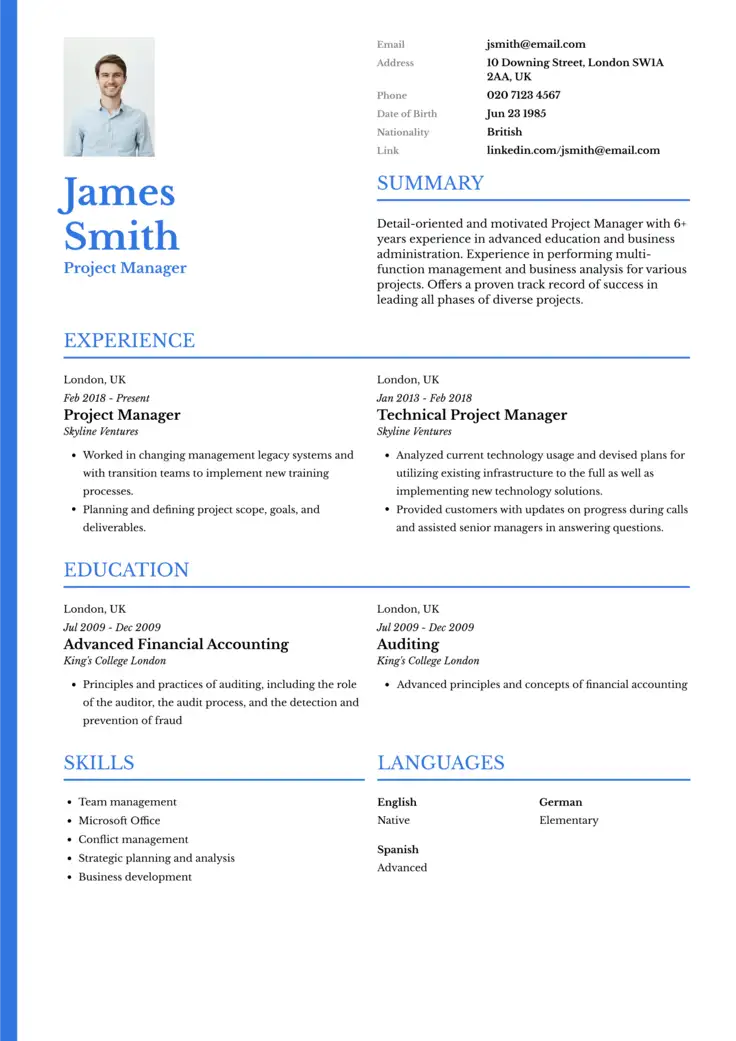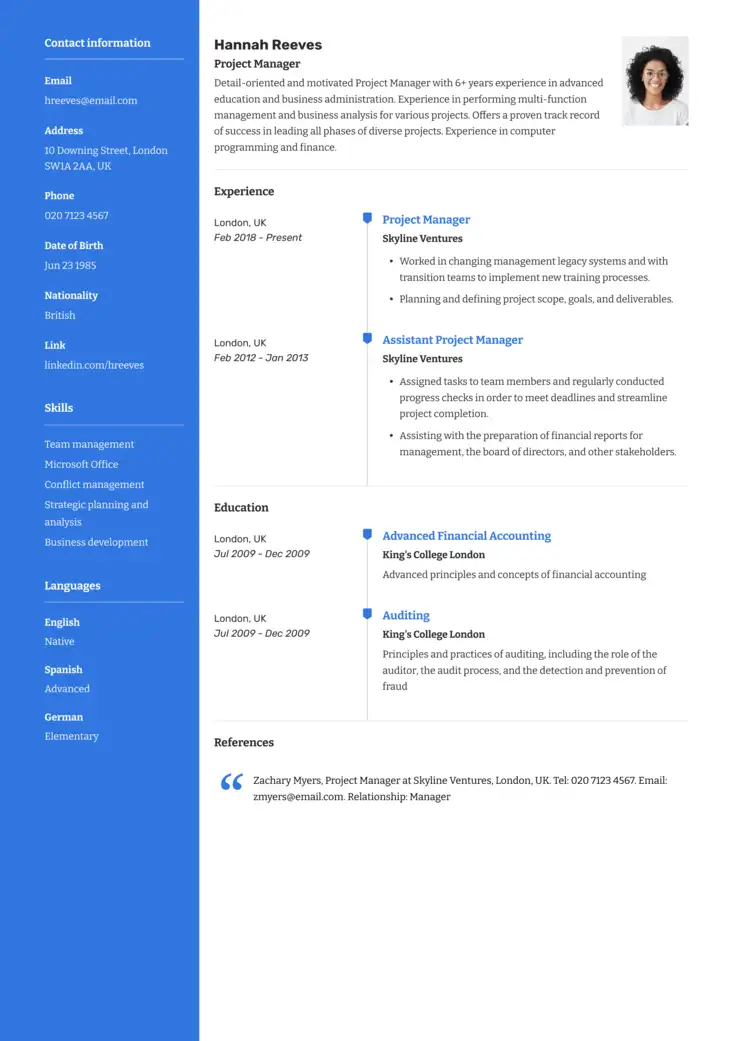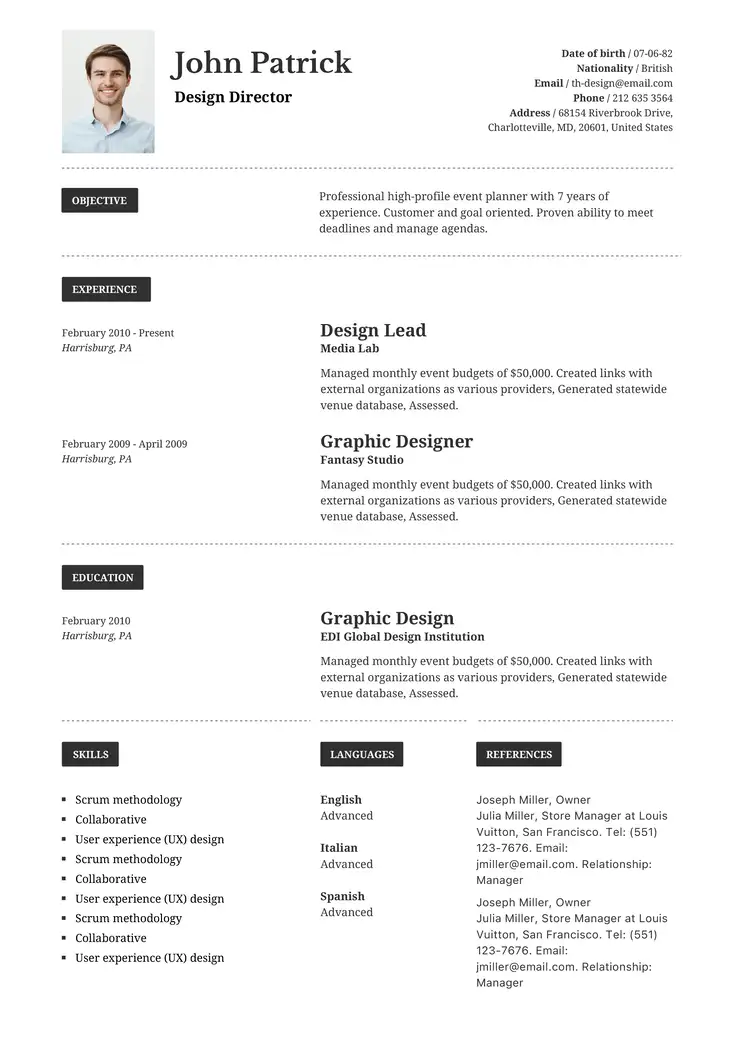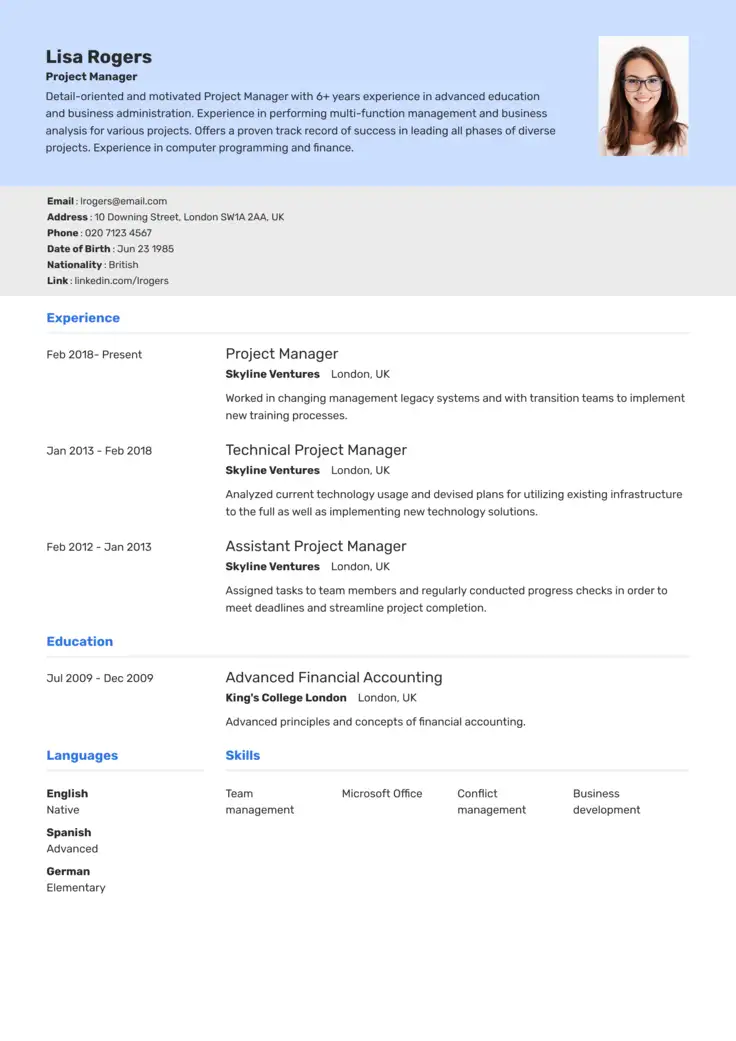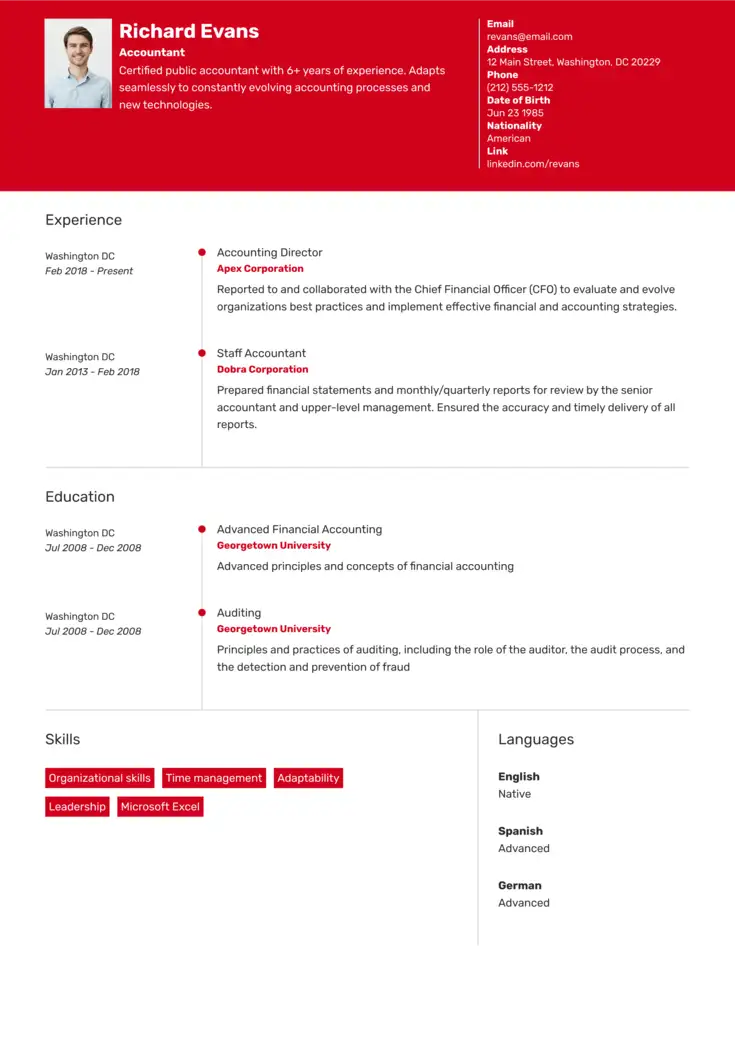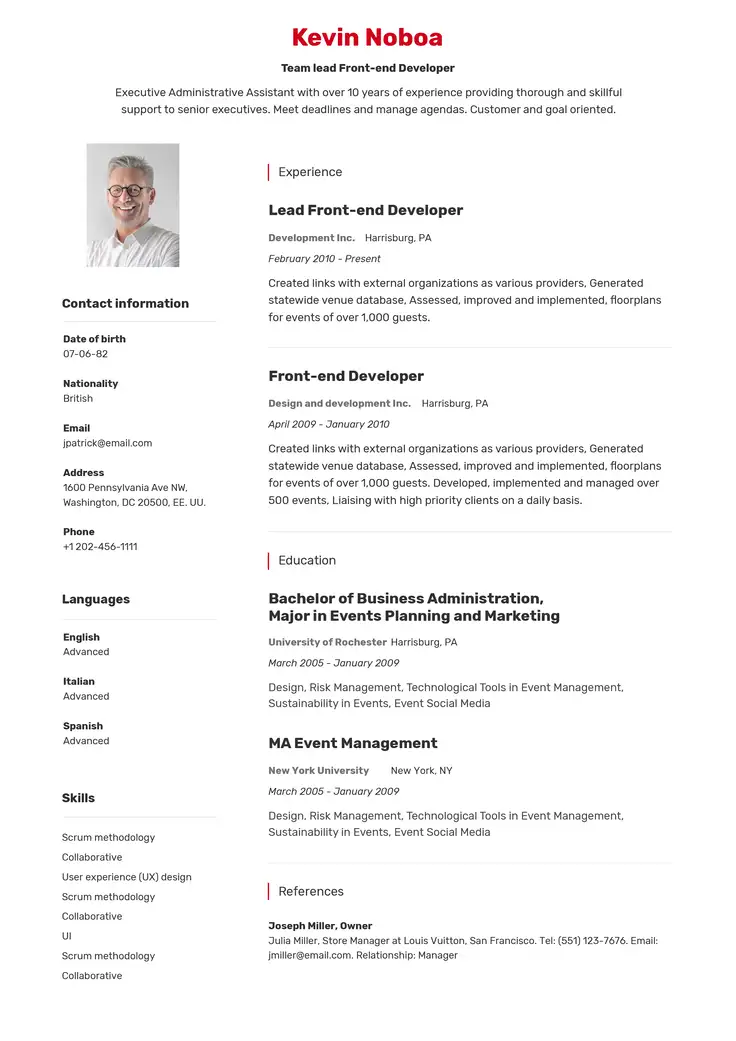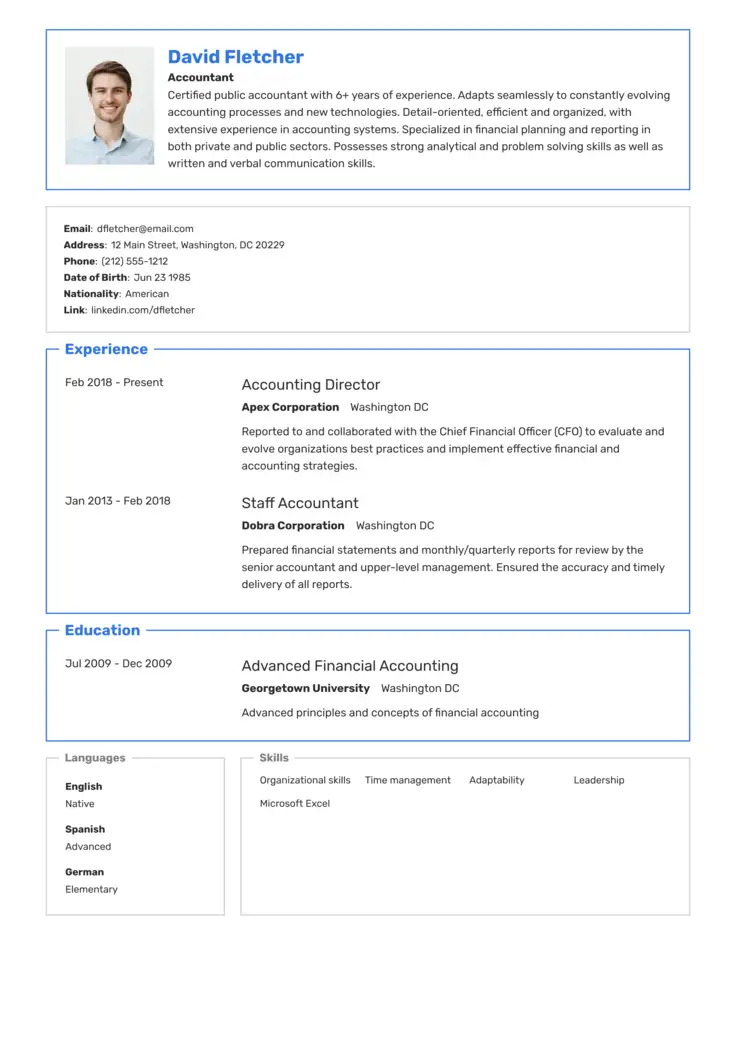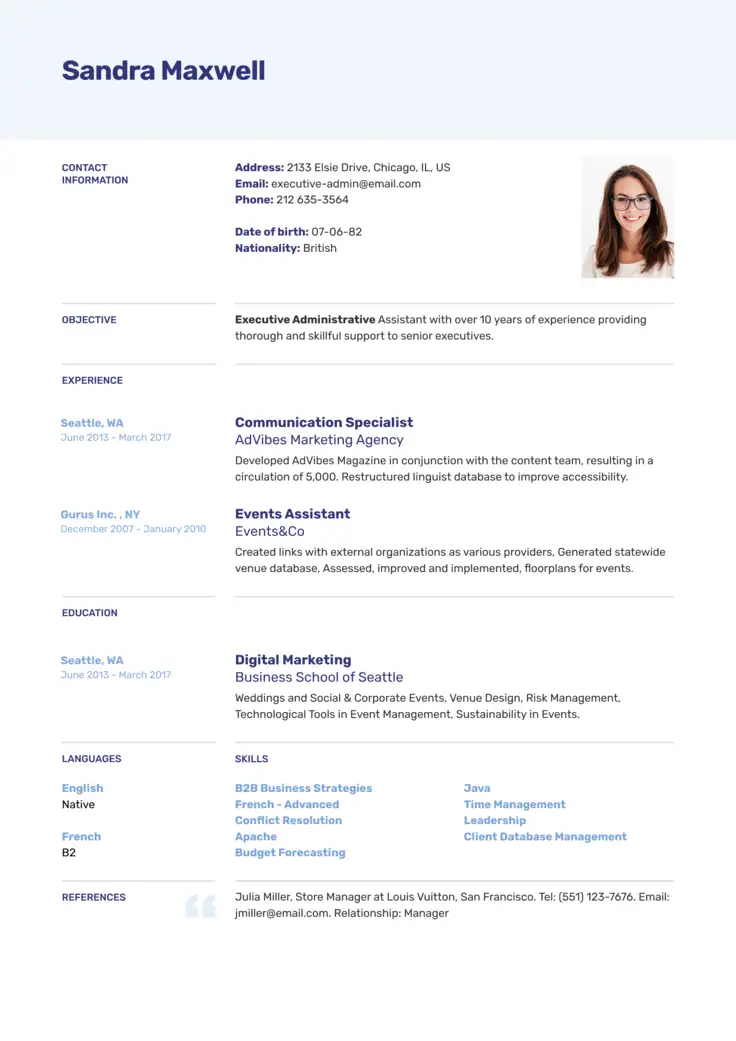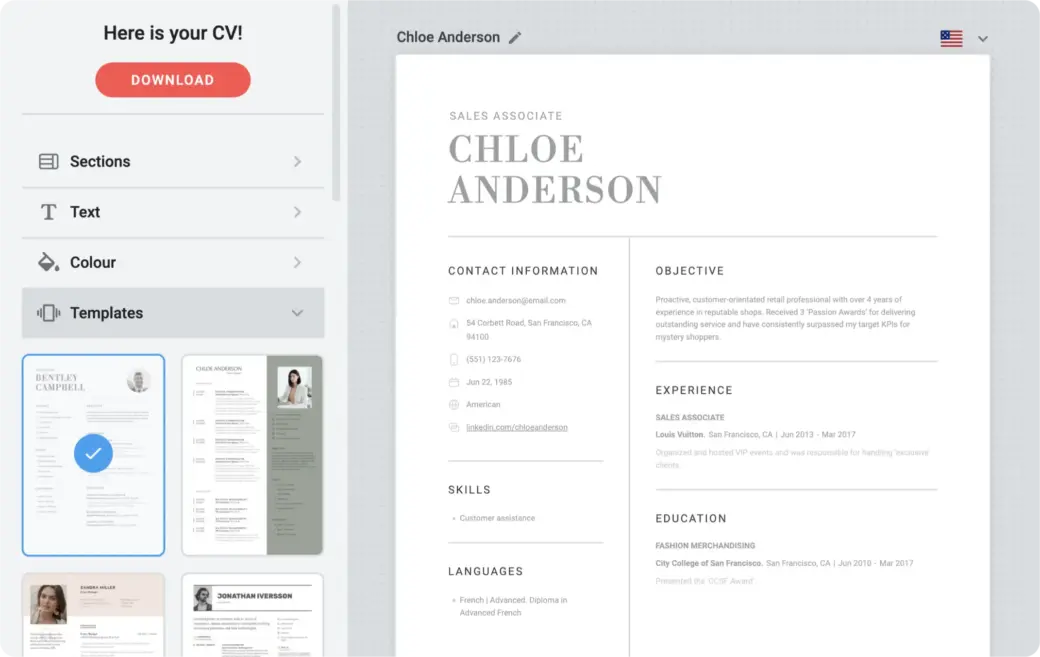
The German Resume
Learn how to apply a German resume format with our multi-language AI builder.
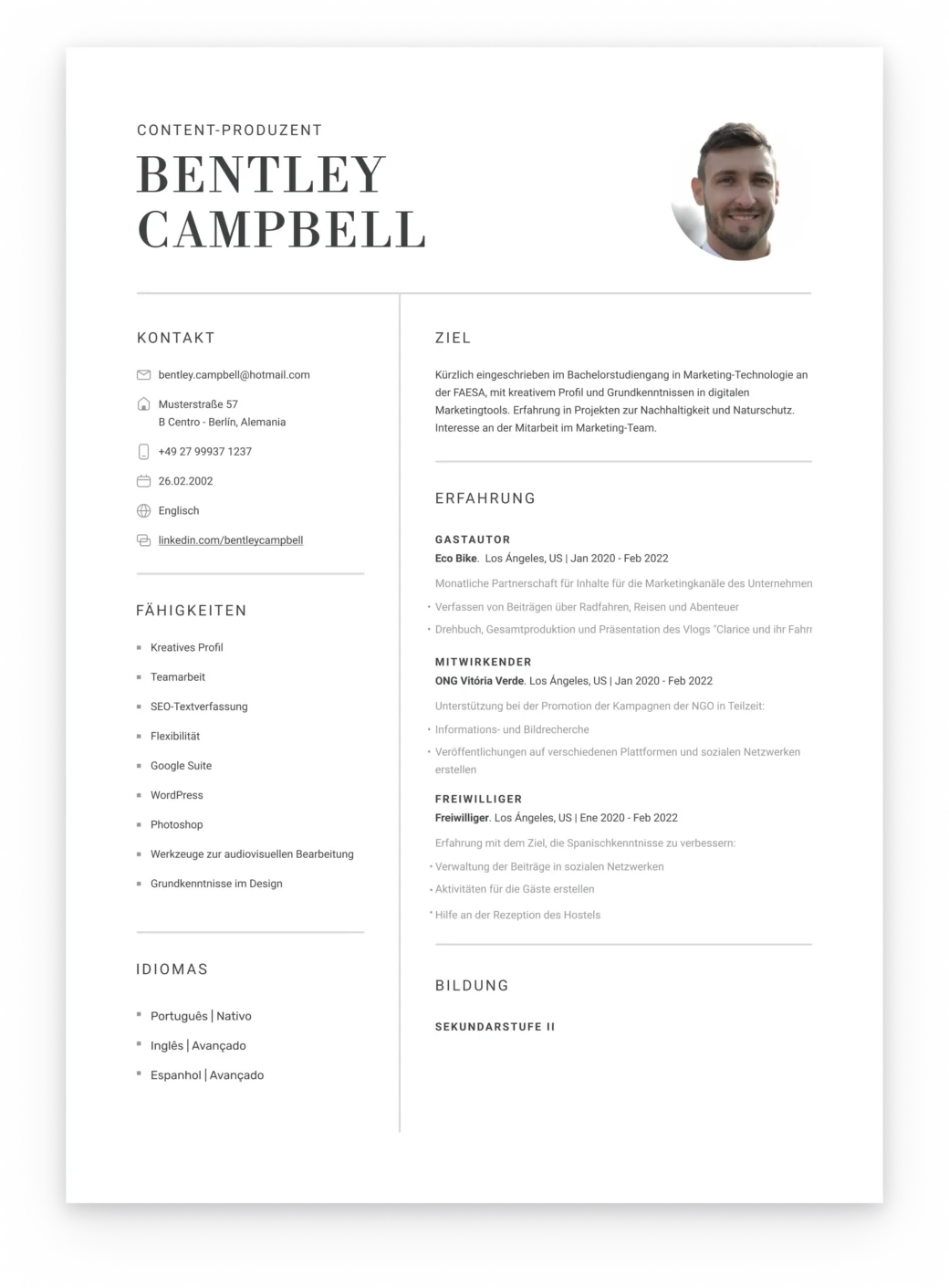
Use Our Online Editor to Create the Perfect German Resume
Impress employers and recruiters in Germany with our professional templates tailored in a German resume format.
If you’re interested in working in a German-speaking country, you will need to know how to present a German job application and what that includes.
Even though resumes may be an international idea, there are still many differences from country to country when it comes to writing a resume to suit the recruiting environment for each culture.
The name for the German resume, or “CV” as it is more widely known in Europe and creating a European style CV is key, and in Germany it’s known as the Lebenslauf. Recruiters in Germany, Austria, Switzerland, and other German-speaking regions, regard a resume as less of a marketing product and more of a factual document.
This means that instead of including lots of professional or academic achievements and details about responsibilities undertaken in previous positions, the resume itself will simply list details that German employers are interested in. Using this format will help you get your candidacy into the next recruitment stage – the interview.
The following guide will tell you what is a Lebenslauf and show you how to write a German resume with our multi-language AI resume builder to fit the recruitment standards of German-speaking companies.

Writing a Resume in German
A simple translation of your current resume will not be enough to land a job in the German market.
You should always be mindful of literal translations in German because the language has many rules and tricks that make it difficult to fully grasp.
If your level of German is low, you can take advantage of our German resume builder and templates.
Also, follow the tips below to create the ideal Lebenslauf to personalize your German-style resume.
- Header with name: Begin with a header containing your name as the title. Do not use “Lebenslauf” as a title.
- Keep a professional layout: Use a clean, German-style design with consistent formatting. Avoid creative or overly decorative styles, multiple fonts, or colors.
- Think of cultural differences: Be mindful of German professional culture. For example, it is common to include a professional photo unless explicitly stated otherwise.
- Focus on the role: Research the company thoroughly. Align your resume with the company’s culture and expectations to present yourself as the ideal candidate.
- Stick to the facts: Be concise without making anything up. Include only information directly relevant to the job, avoiding exaggerated or unnecessary details.
- Avoid mistranslations: Use the correct German language editor or templates to make sure you have proper grammar, spelling, and formatting.
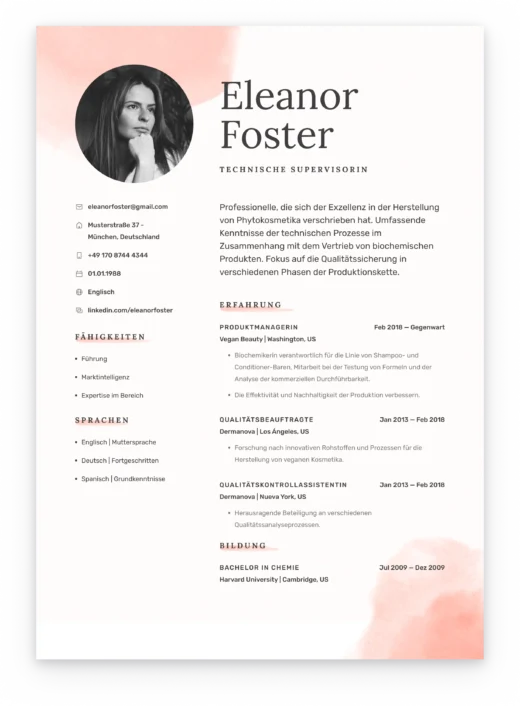
What to Include in a German Resume
Knowing how to structure a German resume is not the only thing to think about when you present a job application to a German company. There is also the content and sections to be included in a German resume.
The most common parts of a German resume are as follows:
Personal and contact details
Persönliches and Kontaktinformationen
This section should include a professional photo in the top-left corner with the personal details, and candidate’s name as the title, either by the side of just below as part of the header for a German resume.
The contact details should include the following:
- Address – Adresse
- Phone number – Telefonnummer
- Email – Mail
- Website or professional online profile such as LinkedIn
The personal details add to the factual nature of the German resume and include certain details that would not usually be included on an American resume.
This section should list:
- Date of birth of applicant, written simply as born – Geboren
- Nationality – Staatsangehörigkeit
If you are uncomfortable adding any of this information or including a photo on your German Lebenslauf, you should be aware that it is not a legal requirement for a job application in Germany.
Education
Ausbildung
This section can either be placed before or after the work experience section depending on your needs and profile.
For students or entry-level applicants, it is possible that a German-style resume with a strong academic history in the initial part of the document will have a more positive impact on a hiring manager than one with a bare job history as the starting point.
The courses and certificates included in this part should be written in reverse-chronological order, starting with the most recent and relevant certification and working backward.
Due to the differences in education systems around the world, when you are writing a German resume, you should try to show the equivalents for your qualifications and your grades, if you choose to include them.
💡Tip
This is particularly important for a German resume as a 4.0. GPA is the highest grade in the U.S., whereas this same digit represents the lowest possible pass grade in Germany.
The following table should help you to demonstrate your grade accurately for German recruiters to understand:
| USA | Germany |
| Letter grade GPA | Note Beschreibung |
| A 4.0 | 1,0 sehr gut |
| B 3.0 | 2,0 gut |
| C 2.0 | 3,0 befriedigent |
| D 1.0 | 4,0 ausreichend |
| F 0.0 | 5,0 nicht ausreichend |
When creating your resume for Germany or another German-speaking country, make sure your titles are translated correctly.
This section should also include any professional training courses that offer relevance to the vacancy you’re applying to. Remember, the aim is to demonstrate your pertinent qualifications and show the hiring manager that you are suitable for the position on offer.
Work experience
Berufserfahrung
Similarly to the education section on a German resume, the candidate’s job history should be laid out in reverse-chronological order, starting with the most recent or current work experience and working backward.
Each separate previous role should detail the dates of employment in the left-hand column and the rest of the information on the right.
This other information includes:
- Job title
- Company name – Add sector if it is unlikely to be known to the prospective employer.
- Location – Remember to write out the full state name if you’re applying to work abroad.
- Description – Under each job title, there should be a short and concise description of the most pertinent details of each post held.
- Personal details – Add to the factual nature of the German resume and include certain information that would not usually be included on an American resume.
If you have any internships or voluntary experience, it is more common for German resumes to encompass those details, as long as they are relevant to the vacancy, in this same section as equal to other paid work experience.
Here is an example of how to format your experience section:
Berufserfahrung (Work Experience)
Marketing Manager
ABC GmbH, Berlin, Germany
Januar 2020 – Heute
- Entwicklung und Umsetzung strategischer Marketingkampagnen, die zu einer Steigerung der Markenbekanntheit um 35 % führten.
- Leitung funktionsübergreifender Teams zur Einführung von fünf erfolgreichen Produktlinien in ganz Europa.
- Umsetzung von Digitalisierungsprojekten, einschließlich CRM-Integration, wodurch die Effizienz um 20 % gesteigert wurde.
Skills
Fähigkeiten
If you add a skills section to your German CV, this could be just the thing to catch the hiring manager’s eye without boasting.
Use bullet points to list a mix of soft and hard skills that you possess and which relate to the vacancy or sector you’re looking to work in.
You can also add languages – Sprachen and IT skills – EDV (Elektronische Datenverarbeitung) to express your knowledge in various languages and computing expertise. Remember that you should mention the name but also explain the function of any specific programs you have used so that the hiring manager can understand the practicality of this skill.
With languages, you should describe your proficiency in terms of the Common European Framework of Reference (CEFR) detailing each level from A1 (beginner) to C2 (native fluency). Take a look at the following sample skill section:
Fähigkeiten (Skills)
Sprachkenntnisse (Languages):
- Deutsch (Muttersprache)
- Englisch (C1)
- Spanisch (B2)
Technische Fähigkeiten (Technical Skills):
- CRM-Systeme (Salesforce, HubSpot)
- SEO- und SEM-Tools (Google Analytics, Ahrefs)
- Fortgeschrittene Kenntnisse in Microsoft Office und Adobe Creative Suite
Berufliche Kompetenzen (Professional Competencies):
- Strategische Marketingplanung
- Teamführung
- Datenanalyse
Hobbies and interests
Interessen und Hobbys
Finally, something that is not commonly seen on American resumes is a section dedicated to personal interests. However, on a German resume, this section is much more popular and allows the potential employer to gain an understanding of the applicant’s character as a whole.
Make sure to only mention relevant hobbies that provide evidence of your previously mentioned experiences or skills.Take a look at how you can add this section to your resume:
Hobbys und Interessen (Hobbies and Interests)
- Content Creation: Schreiben von Blogartikeln über Marketingtrends, um Fachkenntnisse im Content-Marketing zu zeigen.
- Reisen: Erforschung globaler Märkte, um internationales Konsumentenverhalten zu verstehen.
- Freiwilligenarbeit: Bereitstellung von Marketingberatung für lokale Non-Profits, was Führungsqualitäten und Engagement für die Gemeinschaft zeigt.
German Resume Example
One of the best ways to create a German resume that attracts attention from a prospective employer is by studying German resume examples.
Take a look at the following resume in the German style to understand how you can format your own resume:
Michael Jobseeker
123 Musterstraße, 10115 Berlin, Deutschland
michael.jobseeker@example.com | +49 151 23456789 | linkedin.com/in/michaeljobseeker
Geburtsdatum (Date of Birth): 15. März 1990
Geburtsort (Place of Birth): Boston, USA
Familienstand (Marital Status): Single
Nationalität (Nationality): Vereinigte Staaten
Berufserfahrung (Work experience)
Marketing Manager
ABC GmbH, Berlin, Germany
Januar 2020 – Heute
- Umsetzung von Digitalisierungsprojekten, einschließlich CRM-Integration, wodurch die Effizienz um 20 % gesteigert wurde.
- Entwicklung und Umsetzung strategischer Marketingkampagnen, die zu einer Steigerung der Markenbekanntheit um 35 % führten.
- Leitung funktionsübergreifender Teams zur Einführung von fünf erfolgreichen Produktlinien in ganz Europa.
Junior Marketing Specialist
XYZ AG, Munich, Germany
Juli 2016 – Dezember 2019
- Überwachung wichtiger Leistungskennzahlen und Berichterstattung von Erkenntnissen an Stakeholder.
- Unterstützung bei der Erstellung datengetriebener Marketingstrategien, die den Website-Traffic um 25 % erhöhten.
- Koordination regionaler Messen, was zu einem Wachstum der Kundenakquise um 15 % führte.
Ausbildung (Education)
Master of Science in Marketing
Universität Hamburg, Deutschland
Oktober 2014 – September 2016
- Abschlussarbeit: „Konsumentenverhalten in digitalen Marketingkampagnen“
Bachelor of Business Administration
Technische Universität München, Deutschland
Oktober 2010 – Juli 2014
Fähigkeiten (Skills)
Sprachen:
- Deutsch (Muttersprache)
- Englisch (C1)
- Spanisch (B2)
Technische Fähigkeiten:
- CRM-Systeme (Salesforce, HubSpot)
- SEO- und SEM-Tools (Google Analytics, Ahrefs)
- Fortgeschrittene Kenntnisse in Microsoft Office und Adobe Creative Suite
Professionelle Kompetenzen:
- Strategische Marketingplanung
- Teamführung
- Datenanalyse
Hobbys und Interessen (Hobbies and Interests)
- Content Creation: Schreiben von Blogartikeln über Marketingtrends, um Fachkenntnisse im Content-Marketing zu zeigen.
- Reisen: Erforschung globaler Märkte, um internationales Konsumentenverhalten zu verstehen.
- Freiwilligenarbeit: Bereitstellung von Marketingberatung für lokale Non-Profits, was Führungsqualitäten und Engagement für die Gemeinschaft zeigt.
Zertifikate (Certifications)
- Google Ads-Zertifizierung
- HubSpot Inbound Marketing-Zertifizierung
- Project Management Professional (PMP)
Difference Between American and German Resumes
The key differences between American and German resumes include several unique elements specific to German job applications:
No objective or summary
American resumes often include a summary or objective at the start to highlight key skills and expertise.
German resumes skip this altogether. Any introduction or objective (Betreff) is instead included in the cover letter.
Written references
Unlike American resumes, which rarely include references, German applicants are expected to provide written references (Arbeitszeugnis) from previous employers. Your references should be submitted along with your resume.
Addressing employment gaps
In the United States, resumes might downplay employment gaps, but German-style resumes need to include an explanation.
Valid reasons like studying, military service, travel, or parental leave should be included, as well as how any additional skills were gained during these periods if possible.
Using our German-language resume builder with AI guidance can help you add necessary details while helping you comply with any cultural differences.

